
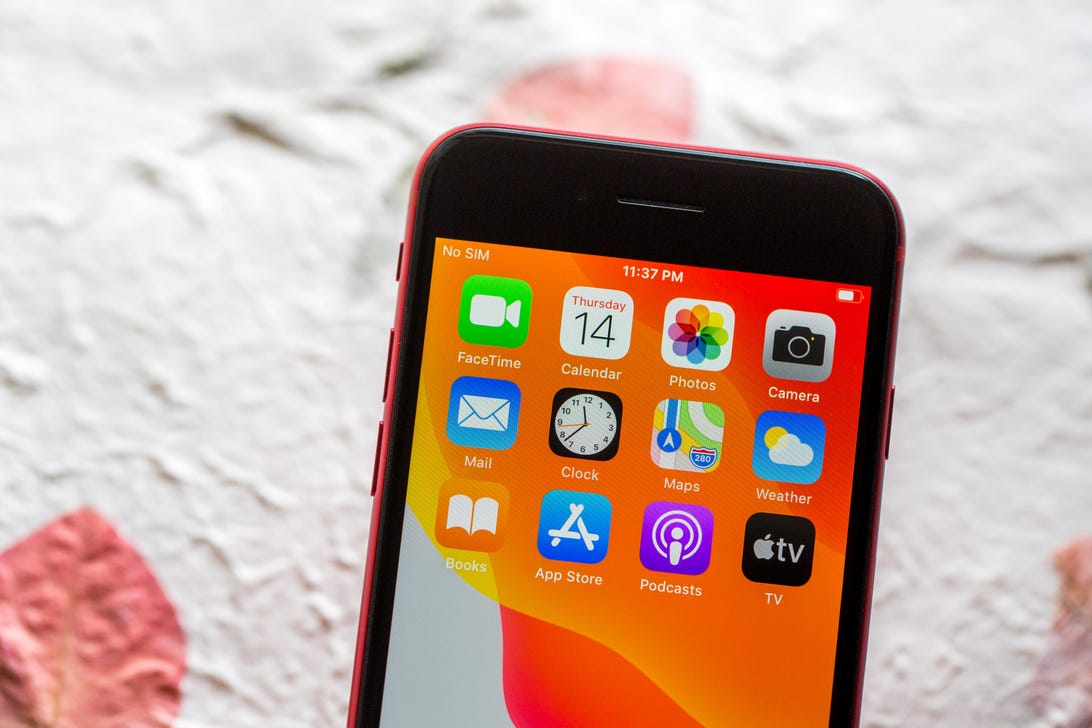
Apple's iPhone SE was released in April 2020 and it's still on sale for its $399 launch price.
John Kim/CNETRumor has it a new and improved model of the iPhone SE could be on its way this spring. Said to be called the iPhone SE 3, the next version of Apple's affordable iPhone may feature Face ID, 5G support and possibly an updated design, too. (Interested in more iPhone SE 3 rumors? Check out CNET's rumor roundup here.) But, since a new model is likely coming soon, does it still make sense to buy the 2020 iPhone SE?
At $399 (£419, AU$749), the 2020 iPhone SE remains an affordable entry into the world of iPhones and iOS. But the iPhone 11 has recently seen a significant price cut to $499, while the more recent iPhone 13 Mini comes in at $729 (£699, AU$1,199). That's before we even consider the plethora of affordable rivals running Android.
Let's take a look at the iPhone SE in 2022.
What is the iPhone SE 2020?
It's Apple's attempt at providing an affordable iPhone option, with more cut-down specs than the other phones launched in 2020 but with a much lower price. Those specs include a 4.7-inch display, an Apple A13 processor and a single 12-megapixel rear camera. Storage starts at 64GB, it supports Qi wireless charging and there's no 5G.
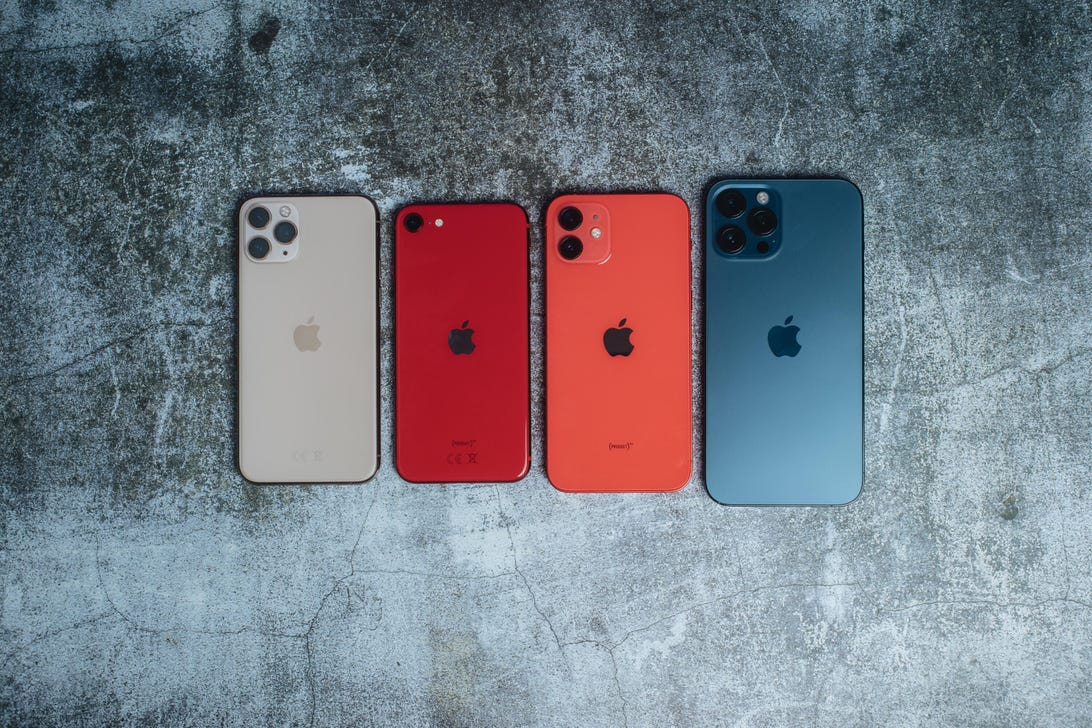
The iPhone SE 2020 is by far the cheapest iPhone you can buy directly from Apple.
Andrew Hoyle/CNETiPhone SE's $399 price tag
At $399 the iPhone SE is the cheapest new iPhone it's possible to buy so if you're simply looking at the lowest cost, this is the way to go. While Apple did try and make its iPhone 13 range more affordable, even the cheapest iPhone 13 Mini starts at $699, a significant price increase over the SE.
The next cheapest iPhone you can get is the iPhone 11. It was released in 2019, but you can still buy a new one on the Apple store. It uses the older A13 Bionic processor, also starts with 64GB of storage, also has wireless charging but does offer an excellent dual rear camera. You also get a much bigger screen with the iPhone 11; 6.1 inches versus the iPhone SE's 4.7 inches.
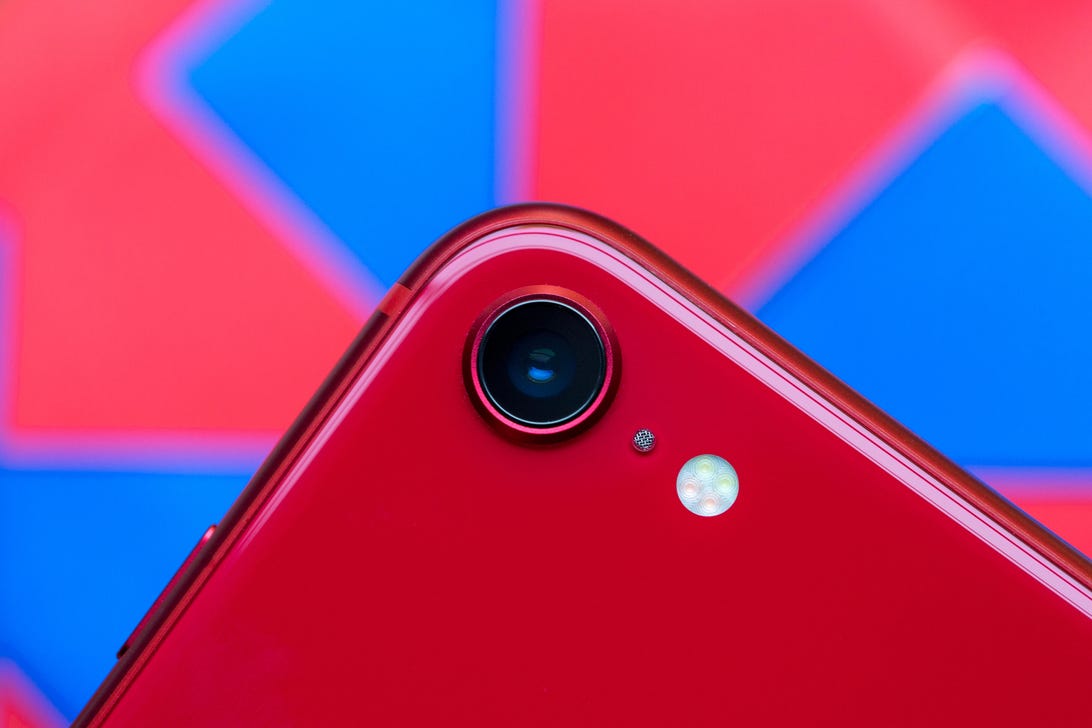
Apple only gave the iPhone SE one camera
While most phones launched last year tended to have multiple cameras on the back, the iPhone SE kept its costs down with just the one. It's likely to be one of the biggest compromises you may need to make, particularly if you enjoy taking photos with your phone.
While the single camera can take some great photos -- comfortably rivaling the iPhone 11 -- it lacks the flexibility and creative potential of cameras with multiple lens options. I love using the different lenses on the more expensive iPhones. As a photographer, I wouldn't want to go without these shooting options, but they come at an additional price. The iPhone 11 packs a standard camera and an additional ultra-wide lens which is great for capturing a wide scene in front of you. If you're into your photography, that extra hundred bucks for the iPhone 11 might be a savvy spend.
If multilens setups are important but you don't want to spend any more than the SE's price, you'll need to consider an Android phone. Which brings me neatly on to...
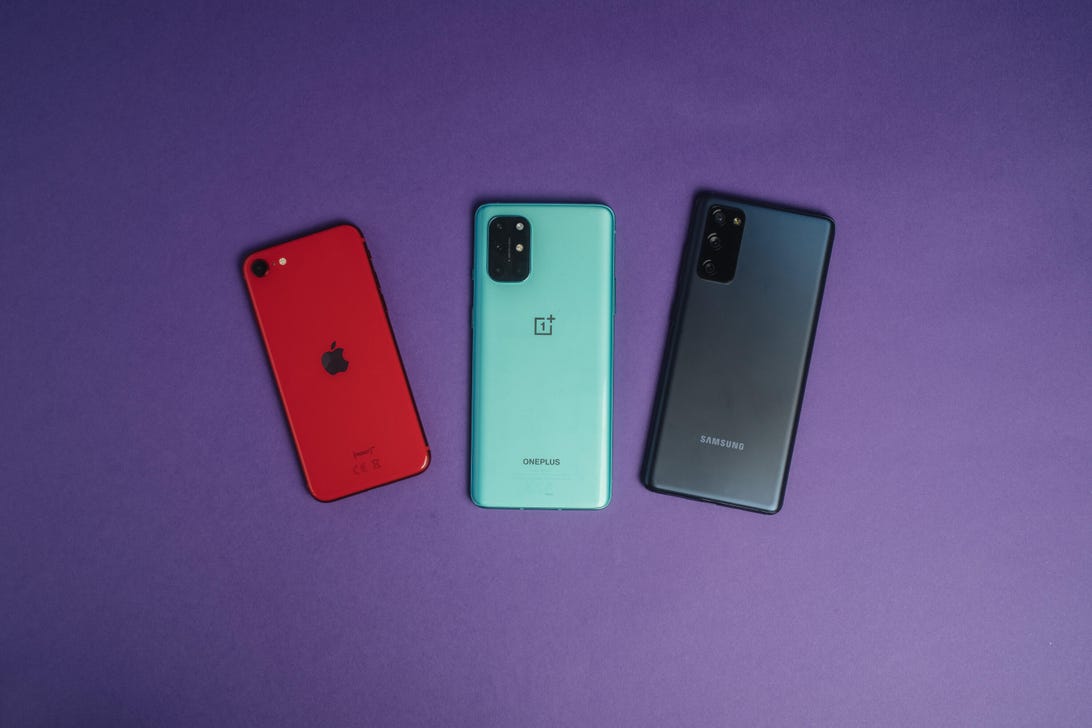
iOS vs. Android
While the iPhone SE is the cheapest iPhone you can buy, it's by no means the cheapest phone. Many Android brands offer much less expensive handsets and usually come with more attractive specs, including multiple lens rear cameras, bigger displays, more storage and even 5G connectivity.
The OnePlus Nord N10, for example, has a 6.4-inch display, 128GB of storage, a good-quality quadruple rear camera and 5G for super-fast data speeds. It can be picked up, SIM-free, from OnePlus for only $300. If you're looking for the best bang for your buck then you'll usually find better specs for lower prices with Android.
The flip side of the argument is that Apple's phones tend to age better, with even five-year old handsets able to run the latest versions of iOS -- complete with security patches to keep them safe. They also hold their value better if you decide to sell your iPhone later on.
Read more: How to buy a new iPhone or Android phone in 2021

iPhone SE's performance
The iPhone SE shares many physical features and hardware specs with 2017's iPhone 8, except for the processor. The 2020 SE has Apple's A13 Bionic chip; the same hardware found in the more expensive iPhone 11. And it shows, with benchmarks putting the 2020 SE leagues above the iPhone 8 and absolutely crushing the OnePlus Nord N10.
It's nippy to use, and powerful enough to handle anything you'd likely throw at it, including most, if not all, of the biggest games to be found in the App Store. It might be a budget phone, but its processor power means you're getting anything but a budget experience. This will also mean your phone will remain usable for longer, being able to cope with new versions of iOS as they arrive.
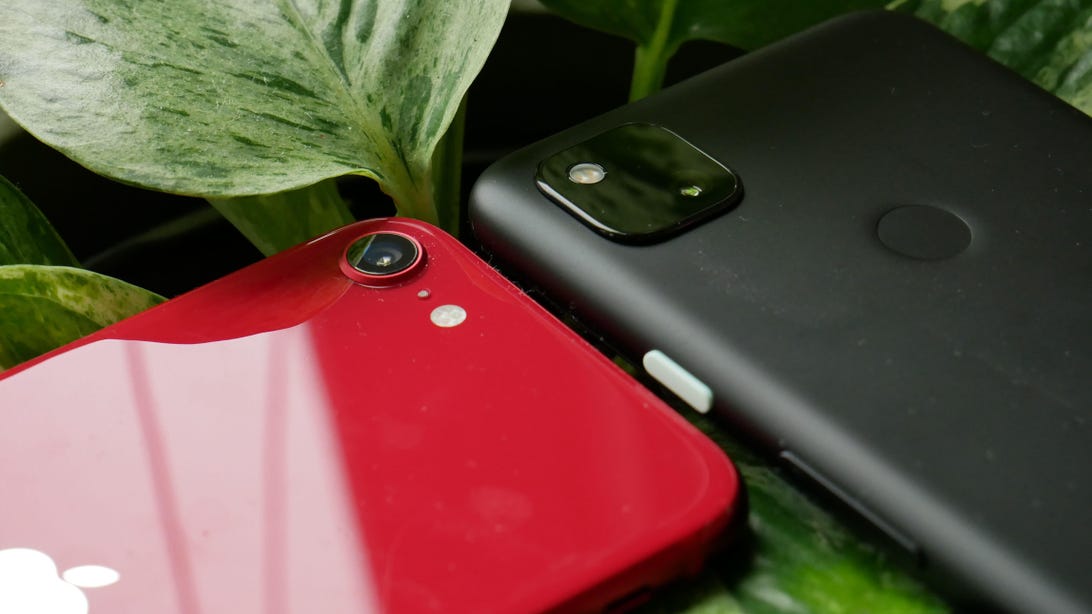
5G vs. 4G
The iPhone SE 2020 doesn't have 5G connectivity. That means those exciting potential download speeds you might have seen advertised will be out of reach with this phone. Sure, at its low price that might not seem like a big deal now, but if you plan on keeping the phone for at least two or three years, you may well feel differently later on.
Some rumors suggest Apple might release a 5G version of the iPhone SE in its next iteration, but that may not happen until later this year. And it's possible the iPhone SE 3 will come with a bigger price tag if it does include 5G.
So your decision here is whether or not you definitely want 5G in your life. If you do, you'll need to look elsewhere (or wait for the updated iPhone SE). That will mean looking at Android phones if you can't stretch your budget to the iPhone 12 range, which does have 5G.









 Add Category
Add Category